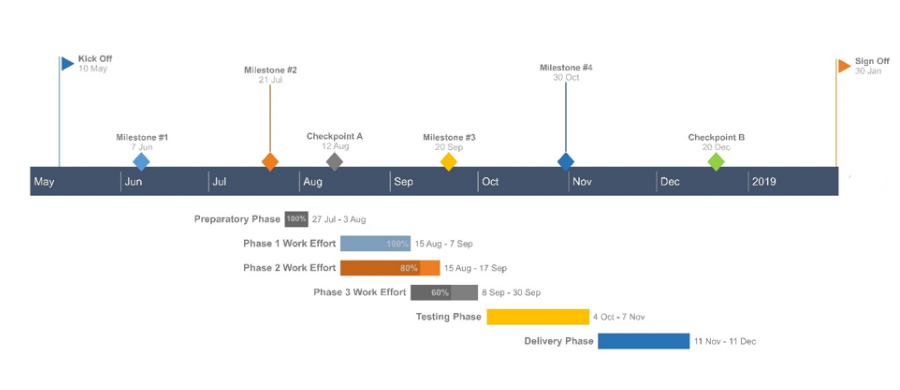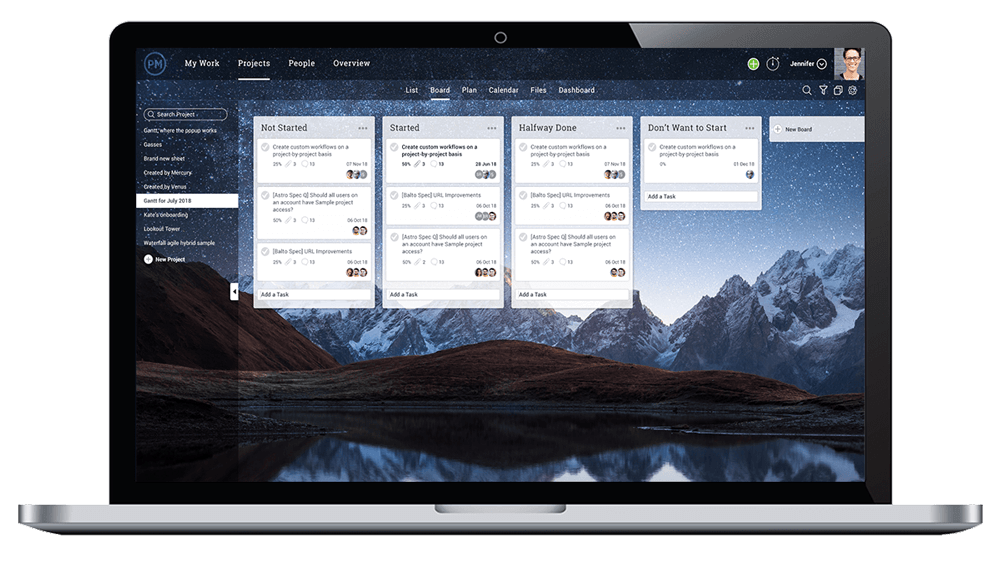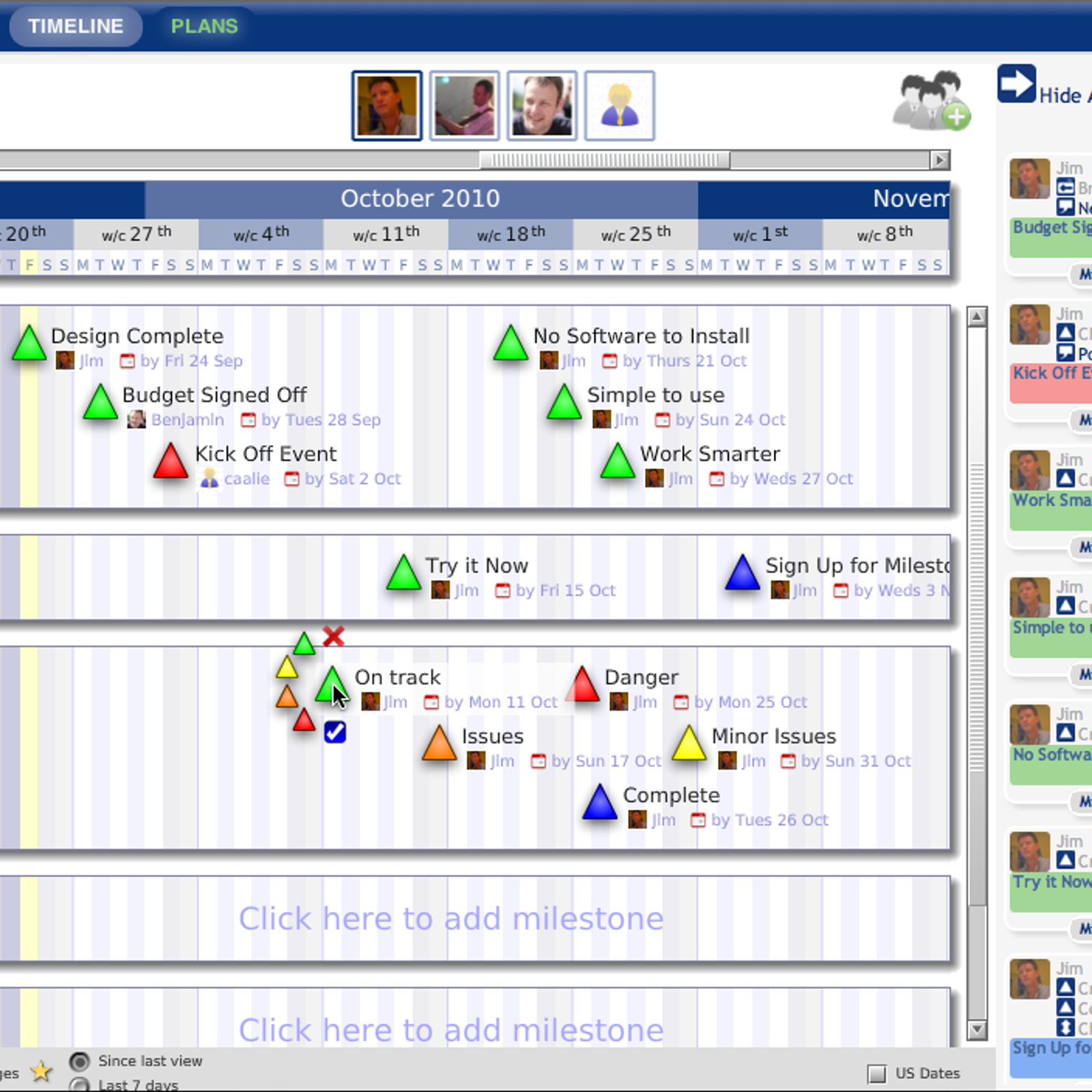Microsoft Project App For Mac
Enthusiasts know that Apple products are slick, quick, and easy-to-use machines. Apple device users–be it an iPhone, iPad, or iMac–have been described as cool and creative trendsetters.

Businesses aren’t any different. Many high-profile companies, like Facebook, Google, Cisco, and almost half of U.S. enterprise-level corporations have bought into Macs for their business.
So it makes sense that when companies are shopping for project management software, they’re specifically looking for project management software for Mac.
The Best Project Management Software for Mac
Googling Mac-specific project management software largely leads to lots of cloud-based options. While programs like Wrike, LiquidPlanner, and Teamwork are fantastic tools for Mac, many companies are looking for a locally installed option.
With that in mind, I dove into the top five project management software for Mac to help buyers figure out what options are available.
Mar 20, 2017 Comment by Frank Drebin on Jun. 14, 2018 at 7:55 am. Merlin Project is now available in version 5 and it is imho the MS Project for Mac. So you dont need to work with MS Project, but get a real piece of Mac software, which works seamlessly with Calendar, Contacts and has the ease of use of macOS. Download Microsoft Whiteboard from the Apple App Store to your iOS device (requires iOS 9 and iPhone 5s or later, iPad Mini 3 or later, iPad Air, or iPad Pro), then sign in with your Microsoft account (Outlook, Hotmail, Live, Xbox, etc.) or Office 365 account (personal, work, or school).
Tech support scams are an industry-wide issue where scammers trick you into paying for unnecessary technical support services. You can help protect yourself from scammers by verifying that the contact is a Microsoft Agent or Microsoft Employee and that the phone number is an official Microsoft global customer service number. 2018-4-7 The Microsoft Project is a Windows and Web-based project-planning tool that lets team members plan, organize, and manage projects, as well as track budgets. What is Microsoft Project? 2018-6-25 Finding the best project management for your needs can be difficult. Although the most popular project management software, Microsoft Project, is currently Windows-dependent, there are other project management tools available that'll work with your Mac. In this article you'll learn what to look for in Mac project management software. Project Viewer 365 for Mac allows project team members to open MS Project MPP Plans from cloud locations like Google Drive. Dropbox, OneDrive, SharePoint Online, Box, Basecamp, URL Links and email attachments. Project Viewer 365 for Mac is compatible with Microsoft Project (MPP file format) 2016, 2.
Microsoft default template mac. While evaluating these tools, I looked for traits that Mac users tend to look for–intuitive design, mid-end pricing, and the “coolness” factor found in Mac’s brand in the form of easy functionality.
These Mac project management software options are arranged alphabetically.
Daylite
If your small business is looking to find an all-in-one customer relationship management software and project management tool that’s designed for Apple products, check out Daylite. The software has almost 50 reviews on Capterra with a solid 4.5/5 rating, and users praising its “tight integration with Apple hardware and software.”
The UI should feel familiar to anyone who’s worked within Apple’s ecosystem—Daylite’s look and feel is similar to tools like iCal and Keynote and is similarly intuitive to use. Project managers can use Daylite to link all of their important project pieces together—from notes to tasks to emails to contacts. The result is a light project management software (or heavy task manager) ideal for client-focused small businesses.
Notable features
- All related activities can be grouped together into projects, which Daylite automatically tracks and logs.
- Customizable enough to create your own pipelines and approval processes for new projects.
- Works on iOS, so you’re not tethered to your MacBook or iMac to use the tool effectively.
Price: $29/user/month https://gglucky.netlify.app/upgrade-microsoft-office-for-mac-2008.html.
(Used Daylite? Share your thoughts with a review!)
FastTrack Schedule 10.2
Mac view only microsoft issue key. FastTrack Schedule 10.2 knows its user base. Its whole interface is intuitive–one reviewer from Macworld said it best:
[FastTrack Schedule 10] sports the familiar Mac look and feel with easy-to-identify icons for layouts, filters, sorting, and more— all with a text label that matches what you see in iPhoto, et al.
In other words, if you’re used to working with Mac software like Keynote or Safari, FastTrack Schedule 10 will be easy to pick up.
Notable features:
- New project managers can jump right in with the program’s 30+ templates, which rely on a simple drag-and-drop UI.
- Project managers can see who on their team is working on what part of the project and when they’re doing so. Project managers can use these features to make sure they don’t overload their team members.
- Want to see the big picture? FastTrack Schedule 10 has a “master schedule” where users can see how all projects line up. This feature is great for bigger companies who want to invest in enterprise project management software.
Price: $349
(Used FastTrack Schedule? Share your thoughts with a review!)
iTaskX3
One reviewer notes that iTaskX is ridiculously simple to use, saying that the software is, “easy to learn, has an intuitive interface, and it’s easy to work [sic] even when you have never touched itaskX before.”
iTaskX’s program is nicely laid out and simple to use. Its biggest claim to notoriety is that it fully integrates with Microsoft Project, the most popular project management software by a landslide. iTaskX lets users open Microsoft Project files and easily exchange information using XML and MPX files.
iTask is based around Waterfall project management–it runs off Gantt charts, tasks, and resources, and organizes all of these bits of information into simple graphics.
Notable features:
- iTaskX is robust enough to manage enterprise-level project management as it stays updated with everyone on the system.
- The project management software offers over 60 different calculators based off task fields, including slack time, cost accruals, and effort-driven scheduling.
- iTaskX also offers full customizability for layout and design. Project managers can adjust the aesthetics on all their projects, from custom fonts to custom layouts. And for those of us who are a little less creative, iTask comes with plenty of templates as well.
Price: $140
(Used iTaskX? Share your thoughts with a review!)
Merlin Project 4
I couldn’t write this review without taking note of one of the most popular project management software options for Mac: Merlin Project.
The first thing that jumps out about Merlin is how intuitive it is. Don’t get me wrong, Merlin may have the most features available on this list, but the developers are careful to present the system’s options in an intuitive layout.
Instead of a jumble of menus and folders, Merlin takes all of its features and displays them simply. TechRadar explains,
Everything happens in one big window that’s divided up into a main panel plus one or more smaller ones that change according to the aspect you’re currently working on.
There are four principal views for the main panel…. Gantt chart with critical paths displayed as bold lines, a network diagram using the Activity on Node format, a list of resources involved in the project, and a time-based display of resource utilisation[.]
The smaller panels are where you’d enter detailed information on selected tasks, resources and so on.
All of that is to say that Merlin makes project planning simple, even when the project manager is relying on a ton of tools to do so.
Notable features:
- Merlin can double as a document management system, as users can upload files straight to tasks.
- The system offers instant reporting, including the ability to create entirely custom reports.
- Gorgeous Gantt charts and simple-to-use interface.
Price: $349
(Used Merlin Project? Share your thoughts with a review!)
OmniPlan 3
Now this is a gorgeous project management software option for Mac.
OmniPlan is one of the most visually appealing project management applications out there, regardless of platform.
Simply drag and drop team members into tasks, set the task’s estimated time for completion, and voila! OmniPlan pumps out a beautiful Gantt chart.
Need to adjust a task because you have team members who have limited availability or because one task took longer than expected? No problem. Again, just drag and drop, and the program will fix estimates for you.
Notable features:
- OmniPlan has incredible filtering options. Project managers can narrow down their task lists by date, resource, effort, priority, dependency claims, and more, so they don’t get overwhelmed by all the information presented in the master Gantt chart.
- OmniPlan also offers Violation Resolution, which means that if something doesn’t look right to the program’s estimates, the software flag the task for the project manager’s review.
- The system is entirely compatible with Microsoft Project.

Price: $149.99
(Used OmniPlan 3? Share your thoughts with a review!)
More?
There are lots of other great project management systems for Mac out there, including xPlan and AltiProject. My bet is that more will emerge as Apple takes over the market for business computers.
I’m interested in your thoughts on these project management software selections. Have you used any of them? Was there a software worth reviewing that I missed (review it on the main Capterra site too!)? Please jot down your thoughts in the comments below–I’m looking forward to hearing from you!
Want more software recommendations? You may be interested in these articles:
Looking for Project Management software? Check out Capterra's list of the best Project Management software solutions.
Microsoft Project App For Mac Pro
-->Visual Studio for Mac makes it easy to develop your app's service with its support for the latest ASP.NET Core Web development platform. ASP.NET Core runs on .NET Core, the latest evolution of the .NET Framework and runtime. It's been tuned for fast performance, factored for small install sizes, and reimagined to run on Linux and macOS, as well as Windows.
Installing .NET Core
.NET Core 2.1 is automatically installed when you install Visual Studio for Mac.

Creating an ASP.NET Core app in Visual Studio for Mac
Open Visual Studio for Mac. On the Start Screen, select New Project..
This will display the New Project dialog, allowing you to select a template to create your application.
There are a number of projects that will provide you with a pre-built template to start building your ASP.NET Core Application. These are:
- .NET Core > Empty
- .NET Core > API
- .NET Core > Web Application
- .NET Core > Web Application (Model-View-Controller)
Select the ASP.NET Core Empty Web Application and press Next. Give the Project a Name and press Create. This creates a new ASP.NET Core app. In the solution pad's left pane, expand the second arrow and then select Startup.cs. It should look similar to the image below:
The ASP.NET Core Empty template creates a web application with two default files: Program.cs and Startup.cs, which are explained below. It also creates a Dependencies folder, which contains your project's NuGet package dependencies such as ASP.NET Core, the .NET Core framework, and the MSBuild targets that build the project:
Program.cs
Open and inspect the Program.cs file in your project. Notice that several things are happening in the Main method – the entry into your app:
An ASP.NET Core app creates a web server in its main method by configuring and launching a host via an instance of WebHostBuilder. This builder provides methods to allow the host to be configured. In the template app the following configurations are used:
.UseStartup<Startup>(): Specifies the Startup class.
However, you can also add additional configurations, such as:
UseKestrel: Specifies the Kestrel server will be used by the appUseContentRoot(Directory.GetCurrentDirectory()): Uses the web project's root folder as the app's content root when the app is started from this folder.UseIISIntegration(): Specifies that the app should work with IIS. To use IIS with ASP.NET Core bothUseKestrelandUseIISIntegrationneed to be specified.
Startup.cs
The Startup class for your app is specified in the UseStartup() method on the CreateWebHostBuilder. It is in this class that you will specify the request handling pipeline, and where you configure any services.
Open and inspect the Startup.cs file in your project:
This Startup class must always adhere to the following rules:
- It must always be public
- It must contain the two public methods:
ConfigureServicesandConfigure
The ConfigureServices method defines the services that will be used by your app.
The Configure allows you to compose your request pipeline using Middleware. These are components used within an ASP.NET application pipeline to handle requests and responses. The HTTP pipeline consists of a number of request delegates, called in sequence. Each delegate can choose to either handle the request itself, or pass it to the next delegate.
You can configure delegates by using the Run,Map, and Use methods on IApplicationBuilder, but the Run method will never call a next delegate and should always be used at the end of your pipeline.
The Configure method of the pre-built template is built to do a few things. First, it configures an exception handling page for use during development. Then, it sends a response to the requesting web page with a simple 'Hello World'.
This simple Hello, World project can run now without any additional code being added. To run the app, you can either select which browser you want to run app the app in using the dropdown right of the Play button, or simply hit the Play (triangular) button to use your default browser:
Visual Studio for Mac uses a random port to launch your web project. To find out what port this is, open the Application Output, which is listed under View > Pads. You should find output similar to that shown below:
Once the project is running, your default web browser should launch and connect to the URL listed in the Application Output. Alternatively, you can open any browser of your choice, and enter http://localhost:5000/, replacing the 5000 with the port that Visual Studio output in the Application Output. You should see the text Hello World!:
Adding a Controller
ASP.NET Core Apps use the Model-View-Controller (MVC) design pattern to provide a logical separation of responsibilities for each part of the app. MVC consists of the following: Microsoft service manager console for mac.
- Model: A class that represents the data of the app.
- View: Displays the app's user interface (which is often the model data).
- Controller: A class which handles browser requests, responds to user input and interaction.
For more information on using MVC refer to Overview of ASP.NET Core MVC guide.
To add a controller, do the following:
Right-click on the Project name and select Add > New Files. Select General > Empty Class, and enter a controller name:
Add the following code to the new controller:
Add the
Microsoft.AspNetCore.Mvcdependency to the project by right-clicking the Dependency folder, and selecting Add Package...Use the Search box to browse the NuGet library for
Microsoft.AspNetCore.Mvc, and select Add Package. This may take a few minutes to install and you may be prompted to accept various licenses for the required dependencies:In the Startup class, remove the
app.Runlambda and set the URL routing logic used by MVC to determine which code it should invoke to the following:Make sure to remove the
app.Runlambda, as this will override the routing logic.MVC uses the following format, to determine which code to run:
/[Controller]/[ActionName]/[Parameters]When you add the code snippet above, you are telling the app to default to the
HelloWorldController, and theIndexaction method.Add the
services.AddMvc();call to theConfigureServicesmethod, as illustrated below:You can also pass parameter information from the URL to the controller.
Add another method to your HelloWorldController, as illustrated below:
If you run the app now, it should automatically open your browser:
Try to browse to
http://localhost:xxxx/HelloWorld/Xamarin?name=Amy(replacingxxxxwith the correct port), you should see the following:
Troubleshooting
If you need to install .NET Core manually on Mac OS 10.12 (Sierra) and higher, do the following:
Before you start installing .NET Core, ensure that you have updated all OS updates to the latest stable version. You can check this by going to the App Store application, and selecting the Updates tab.
Cheap 2016 microsoft office for mac. Follow the steps listed on the .NET Core site.
Make sure to complete all steps successfully to ensure that .NET Core is installed successfully.
Summary
This guide gave an introduction to ASP.NET Core. It describes what it is, when to use it, and provided information on using it in Visual Studio for Mac.For more information on the next steps from here, refer to the following guides:
Microsoft Project App For Mac Windows 10
- ASP.NET Core docs.
- Creating Backend Services for Native Mobile Applications, which shows how to build a REST service using ASP.NET Core for a Xamarin.Forms app.
- ASP.NET Core hands-on lab.